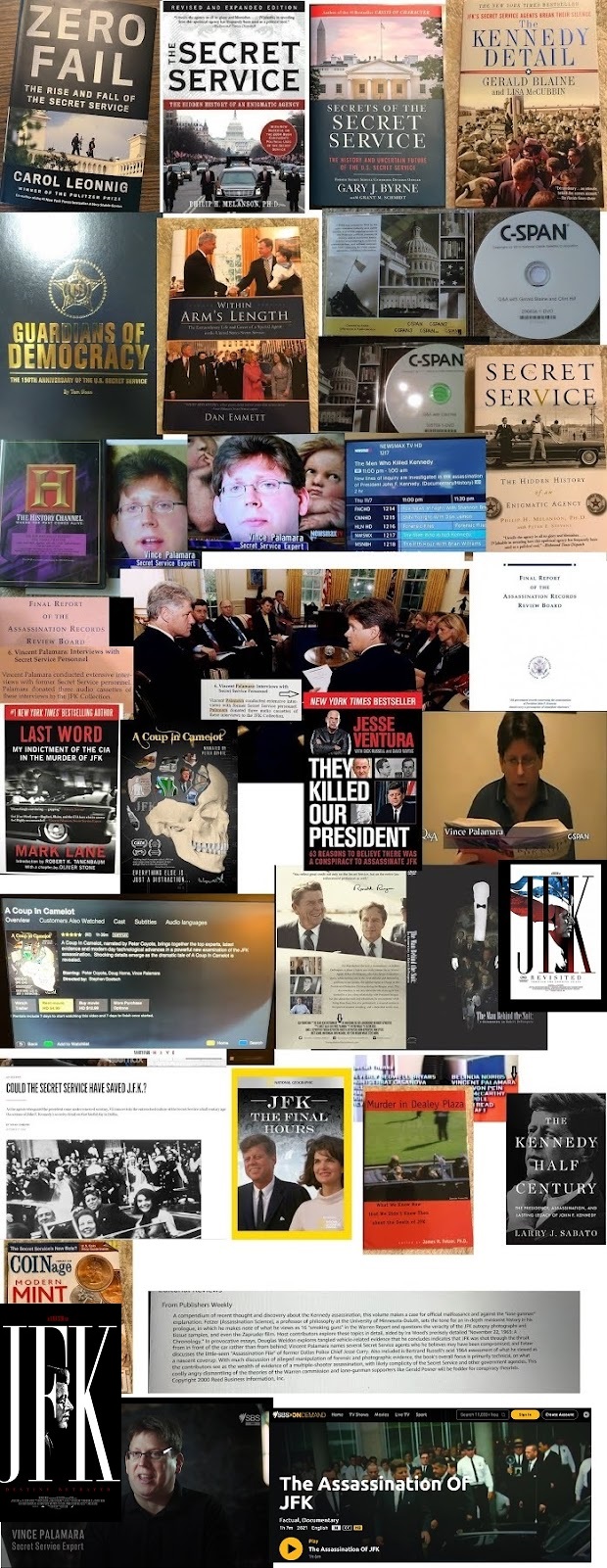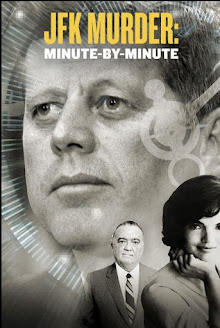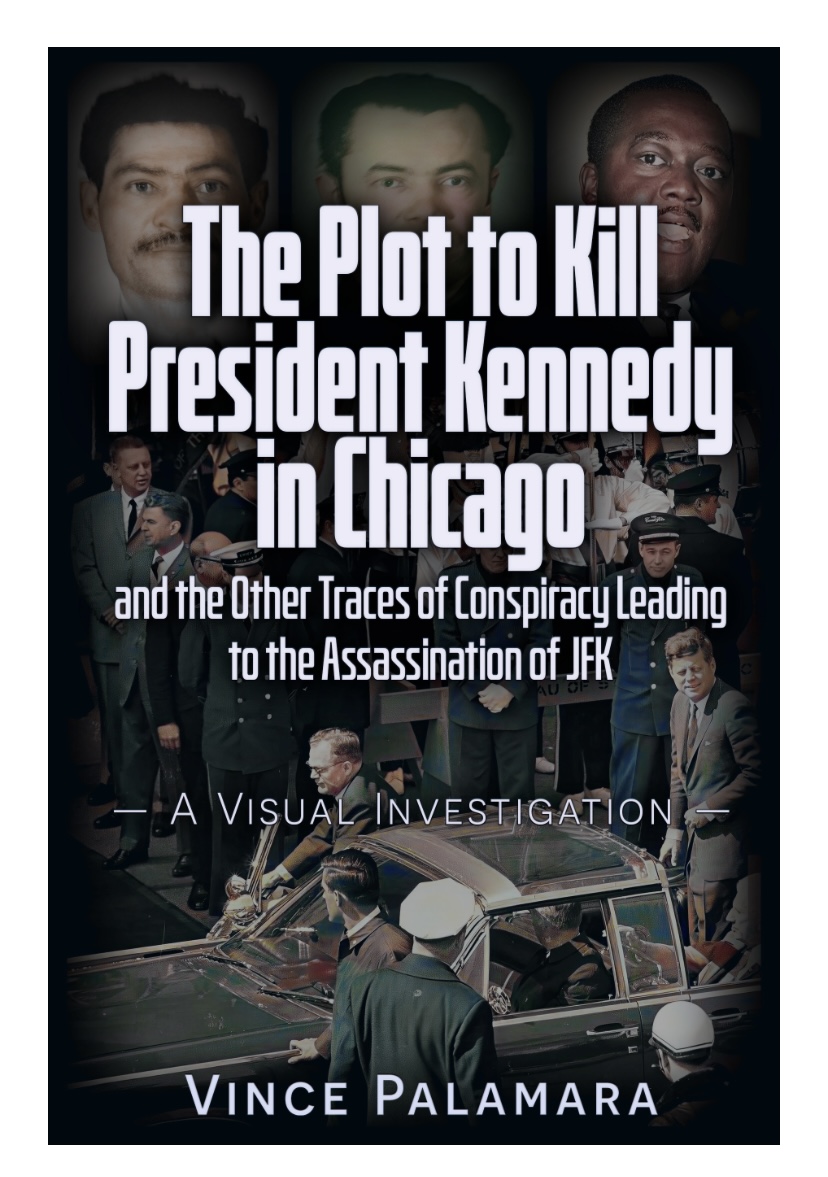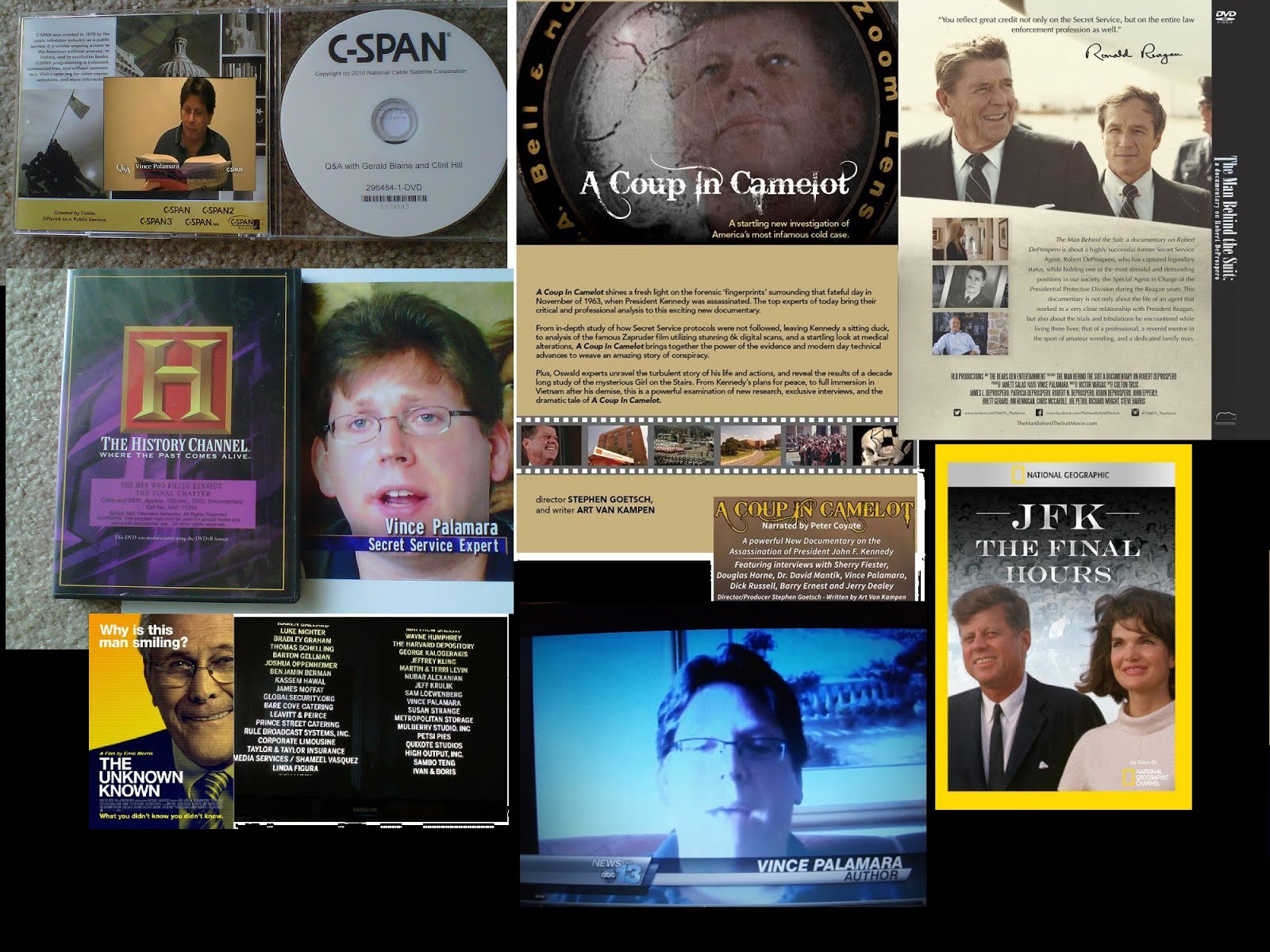Jim DiEugenio re: Vince Palamara in Vince Bugliosi's book :)
Jim writes---
"Bugliosi’s next chapter deals with the Secret Service. Again, I can hardly recall any notable book saying that the Secret Service was the main plotter in the JFK case. The only one I can think of is the 1974 self-published effort entitled Murder from Within. It is a book that few people even know about, let alone use. Bugliosi seems to understand this, as he did not with the FBI. So he writes that “One other U.S. intelligence agency has had the suggestion of complicity in the assassination leveled against it by the conspiracy theorists, the Secret Service, but nowhere near as much as the CIA and FBI.” (p. 1239, italics added) But in his continual efforts to have it both ways, he later changes this to the Secret Service being behind the assassination. (p. 1241) Why does he do this, when in fact, there is virtually no one who says this? Probably so he can land another of his straw man broadsides: “... the notion that the Secret Service was behind the assassination is, like virtually all the conspiracy theories, ridiculous on its face.” (p. 1241) Yep, especially when virtually no one is saying it.
Now what does Bugliosi do with his two classifications of the Secret Service as being both “complicit” and/or “being behind” the assassination? As is his usual bent, he severely limits the discussion of both. How does he do that? Consider the following: “With respect to the Secret Service, for all intents and purposes, the inquiry about complicity in the assassination begins and ends with the motorcade route.” (ibid) This is a shocking statement. Even for someone as agenda-driven as this author is. Let me drop just one name to show how Bugliosi’s self-imposed limits are nothing but solipsistic: Abraham Bolden. Secret Service agent Bolden has described an assassination plot on Kennedy in Chicago in early November that is very similar in design to what happened in Dallas. But as I demonstrated in Part 3 of this series, since Bugliosi does all he can to curtail any discussion of the plot to kill Kennedy in Chicago, he can ignore that vitally important episode.
Let me drop another name to show how solipsistic Bugliosi’s take on the subject of the Secret Service is: Elmer Moore. As I wrote in Part 4 of this series, Moore has become one of the most important discoveries of the ARRB. As Pat Speer, Doug Horne, Gary Aguilar, and myself have noted, it is not unjustified to say that Moore was one of the most important players in the cover-up. The Secret Service agent eventually became a personal valet to Earl Warren. Again, Bugliosi does not have to deal with the very important figure of Moore. Why? For the simple reason that he does not mention him in the nearly 2,700 pages of his book.
Surprisingly, the author glosses over the name of Pat Kirkwood in this chapter. Kirkwood ran an after-hours club called The Cellar located in Fort Worth. Within days of the assassination, it became fairly well known that Secret Service agents had been at the Fort Worth club well into the early hours of the morning. Drew Pearson mentioned it this way, “Obviously, men who have been drinking until nearly 3 AM are in no condition to be trigger-alert or in the best physical shape to protect anyone.” (Jim Marrs, Crossfire, p. 246) As Marrs notes, this was a clear violation of the Secret Service rules and regulations as expressed in their manual. But James Rowley decided not to discipline any of the agents involved, even though four of them rode on the car behind the presidential limousine. Why? Because if he did, it “might have given rise to an inference that the violation of the regulation had contributed to the tragic events of November 22.” (ibid, p. 247) Which some people have said was the case. Both Ken O’Donnell and Ralph Yarborough noted the slow reaction time by the Secret Service to the fusillade.
Pat Kirkwood later elucidated what had happened. At about midnight the evening before the murder, some reporters called him and said they were out with about 17 Secret Service agents. They asked him if they could bring the agents over. According to Kirkwood, they were still there at 3:30 AM, joking about how local firemen had to replace them in guarding the president at the Fort Worth hotel. After the episode got in the papers, the White House called and told Kirkwood not to talk to anyone because the Secret Service had taken a beating in the press already. So Kirkwood and his manager didn’t say anything for years. But later manager Jim Hill said that the agents were clearly drunk since they were drinking nothing but alcohol. (ibid, p. 248) It’s incredible that Bugliosi deals with all this in one paragraph. In fact, I have told you more about what actually happened than he does. Further, the man, who has all kinds of boilerplate condemnation of the critical community, does not condemn this unprofessional and irresponsible behavior. Which actually borders on negligence.
The man who has done the best work on the Secret Service failure in Dealey Plaza is Vince Palamara. Bugliosi mentions his book called Survivor’s Guilt and briefly discusses it. (See p. 1243) What the author leaves out from Palamara is rather interesting. Thankfully, Doug Horne put it in Vol. 5 of his series Inside the ARRB.
As Horne notes, in the original security design, there was included motorcycle escorts traveling to the side of the limo. At a meeting on November 21st, Secret Service agent Winston Lawson did two things: he cut the number of guarding escort motorcycles in half—from four to two—and he then placed them to the rear of the car, not to the side. (Horne, p. 1402) Further, Horne notes that Lawson then lied about this by saying that it was Kennedy who wanted the motorcycles to the rear. (ibid, p. 1403) Palamara has also proven that it was standard practice to have motorcycles ride to the side of the limousine. Therefore, what happened in Dallas appears to be a deliberate anomaly. (ibid) As Horne writes, “If motorcycle patrolmen had been riding abreast of the limousine on Elm Street, their positioning may have obscured the President from shooters firing in front of the limousine.” (Horne, p. 1404)
This weird formation of the motorcycles is backed up by B. J. Martin, one of the cyclists. He said he was given instructions at Love Field to ride to the rear of the limousine. He said he had never heard of such a formation. (ibid, p. 1404) The HSCA investigated these charges and found them soundly based. They called the formation around the president, “uniquely insecure.” (ibid, p. 1405) In addition, Palamara found out that Floyd Boring had told Clint Hill that JFK did not want agents riding on the rear steps of the presidential limousine in Dallas. (ibid, p. 1406) As Horne writes, this assignment of agents may have obscured the aim of an assassin firing from the rear of the car. Again, the failure to do this was falsely attributed to President Kennedy. (ibid, p. 1409) Even though Bugliosi has read Palamara, there is not a word about any of this in Reclaiming History.
Just like there is not a mention of the name of Henry Rybka. Rybka is a Secret Service agent who has become famous due to a YouTube film clip. This film was shot by local television in black and white. It depicts both the presidential limo and the follow up car leaving Love Field. Agent Henry Rybka is running along the rear fender of the presidential limo as the car pulls out of the airport. As Rybka is doing this, agent Emory Roberts calls him back away from the car. Rybka is surprised by the Roberts order. He turns, shrugs his shoulders, and stretches out his arms—three times. Rybka apparently thought he was going to be on the rear steps of the limo. That is, obstructing any shots from the rear of the car. Apparently, he can’t believe he is being called off.
Palamara calls what happened in Dallas—the altering of the motorcycle formation and cutting it in half, and the removal of agents from standing on the rear of the car—“security stripping”. This clearly resulted in the assassins having a much better opportunity to hit their target than if the proper procedures had been followed. No surprise, Bugliosi apparently did not think any of this was important in discussing Secret Service complicity in the assassination."
. . . . .
Wednesday, December 1, 2010
Jim DiEugenio re: Vince Palamara in Vince Bugliosi's book :)
Subscribe to:
Post Comments (Atom)










































![VINCE PALAMARA [remember to scroll all the way down!]](https://blogger.googleusercontent.com/img/b/R29vZ2xl/AVvXsEjSZ-Z_puqnjl3UgdiJxBenMyIMaFhmBD-PYQUsxCtFS4UF7dJQB6n32rt9a0ZqFRPmuBoukhrMZxv6LOD9GoUGPiaShO3wj_8xL98obRAsUbIf0mXutzbq7jKDrCp8Y-Y0k9rnS5ARjQQ/s1600/11.jpg)


![CHAPTER 8 OF ARRB FINAL REPORT [I AM IN THIS REPORT, AS WELL]...HMMM---THE SECRET SERVICE DESTROYS](https://blogger.googleusercontent.com/img/b/R29vZ2xl/AVvXsEimGbOuG69gW-cgAbsfjd8p8PD-subznIjcsQXUSFq560o_kiXunf9TcH0fkOqmWuK73id6m5TyVMhWcfBrPUEee6JLbvqNZKdIVQa5Drcz568Ue6GZdf_PUtLuLwPDcucv3gOn5KGBZPw/s1600/DSCF0462.JPG)




No comments:
Post a Comment